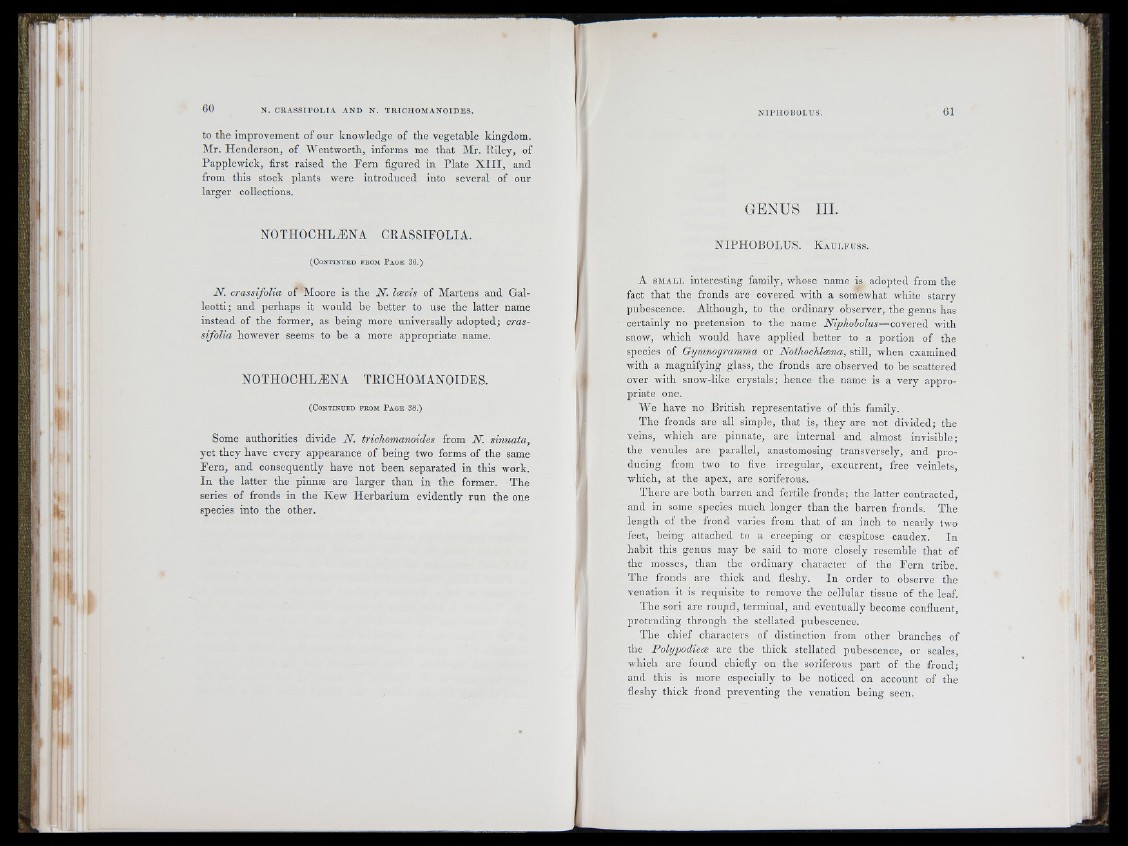
Il :
to the improvement of our knowledge of the vegetable kingdom.
Mr. Henderson, of M^entworth, informs me th a t Mr. Riley, of
Papplewick, first raised the F e rn figured in Pla te X I I I , and
from this stock plants were introduc ed into several of our
larger collections.
NOTHOCHLÆNA CRASSIFOLIA.
( C o n t i n ü b d FB O JI P a o e 3 8 . )
N . crassifolia of Moore is the N . Imzis of Martens and Galleo
tti; and perhaps it would be be tte r to use the latte r name
instead of the former, as being more universally adopted; crassifolia
however seems to be a more appropriate name.
NOTHOCHLÆNA TRICHOMANOIDES.
(C O S T IN Ü E D FROM P a GE 3 8 . )
Some authorities divide N . triehomanoides from N .
y e t they have every appearance of being two forms of th e same
F e rn , and consequently have not been separated in this work.
I n the la tte r th e pinnæ are la rg e r th an in th e former. The
series of fronds in the K ew H e rb a rium evidently ru n the one
species into the other.
GENUS III.
N IPH O B O L U S . K a u l f u s s .
A S M A L L interesting family, whose name is adopted from the
fact th a t the fronds are covered with a somewhat white starry
pubescence. Although, to the ordinary observer, the genus has
certainly no pretension to the name Niphoholus—covered with
snow, which would have applied be tte r to a portion of the
species of Gymnogramma or Nothochlæna, still, when examined
with a magnifying glass, th e fronds are observed to be scattered
over with snow-like crystals; hence the name is a very approp
riate one.
We have no British representative of this family.
The fronds are all simple, th a t is, they are not divided; the
veins, which are pinnate, are in te rn a l and almost invisible;
the venules are parallel, anastomosing transversely, and pro ducing
from two to five irreg u la r, excurrent, free veinlets,
which, at the apex, are sorlferous.
T h e re are both barren and fertile fronds ; the latte r contracted,
and in some species much longer than the b arren fronds. The
length of the frond varies from th a t of an inch to nearly two
feet, being attached to a creeping or cæspitose caudex. In
h ab it this genus may be said to more closely resemble th a t of
the mosses, than the ord in a ry character of the F e rn tribe .
T he fronds are thick and fleshy. In order to observe the
venation it is requisite to remove the cellular tissue of the leaf.
The sori are roupd, terminal, and eventually become confluent,
p ro tru d in g th ro u g h the stellated pubescence.
The chief characters of distinction from other branches of
the Polypodicæ are the thick stellated pubescence, or scales,
which are found chiefly ou the soriferous p a rt of the frond;
and this is more especially to be noticed on account of the
fleshy th ick frond preventing the venation being seen.